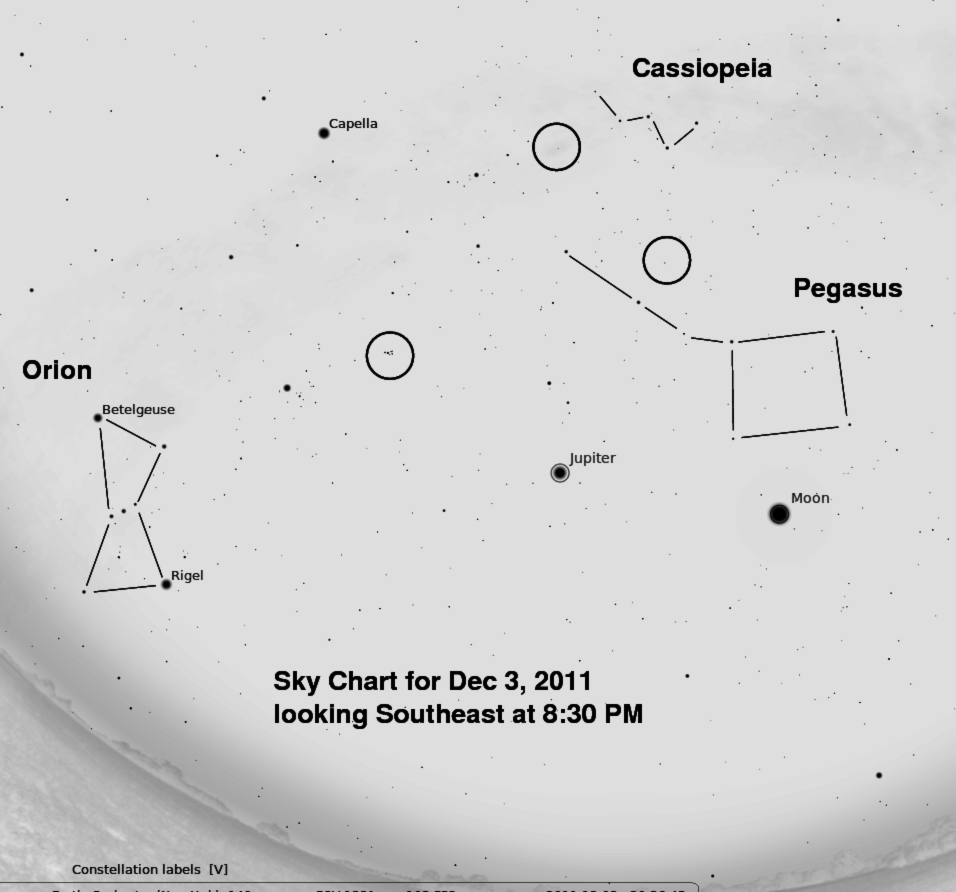Dec 3, 2011: Open House at the RIT Observatory
Tonight, you can see the Moon and Jupiter through our
telescopes.
In addition, we'd like to show you three features
of the winter sky that are not quite so obvious.
- The Pleiades is a nearby cluster
of young stars, all born about 100 million years
ago, when dinosaurs roamed the Earth.
The light from these stars takes about 380 years
to reach us.
- The Double Cluster is a much younger set
of stars, only 3 to 5 million years old.
Since these clusters are much farther away --
perhaps 7000 light years from Earth --
they appear much smaller and fainter than the Pleiades.
These stars are right in the middle of the Milky Way;
can you see it tonight?
- The Andromeda Galaxy
is far beyond our own Milky Way.
This galaxy of over 100 billion stars is
over 2 million light years away from us!
The circles in the chart below show you where to find
these three objects. Which one is which?

When you look at Jupiter tonight, you should be
able to see four of its moons.
Can you draw them in their apparent places
in the diagram below?
After you've made your drawing,
please ask for an answer sheet --
and you can find out which moon is which!

- Io
is covered with active volcanoes
- Europa
may have an ocean hidden under the miles
of ice which over its surface
- Ganymede
is the largest of Jupiter's moons,
and about 50% larger than our own Moon
- Callisto
has a slushy surface; in fact,
almost half its entire body is made out of ices
Thanks for coming to the RIT Observatory!
Please check our web page for future events.
http://www.rit.edu/cos/observatory/
Another good place to check is the Astronomy Section
of the Rochester Academy of Sciences:
http://rochesterastronomy.com


